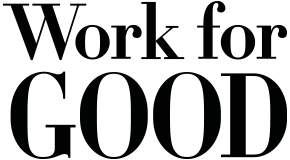What’s in a benefits package?
Over at Mission:Money, the online financial wellness resource specifically for nonprofit professionals (sponsored by SunTrust Foundation and presented by our parent company, the Georgia Center for Nonprofits), you’ll find a wealth of information about building a sound financial foundation; dealing with fiscal concerns like credit, retirement, insurance, and student loans; and much more.
Here’s a sampler of advice for understanding your employee benefits that you’ll want to review when fielding your next job offer – available for free, anytime, from Mission:Money.
From Evaluating employee benefits: 10 things to consider before saying “Yes”
Be prepared to evaluate any job offer by considering the complete terms, and remembering that, no matter what kind of money is involved, non-financial benefits can make a big difference.
-
Professional development. What opportunities will this job offer you to learn, grow, and advance?
-
Health insurance and wellness benefits. Pay especially close attention if you are presented with multiple options, especially when comparing more traditional plans with high-deductible coverage.
-
Retirement. Factor together your contributions and employer matches, calculate pre-tax savings, and be sure you understand any vesting schedules involved.
-
Flexibility. Does the employer offer flexible hours, work-from-home opportunities, or any other kind of scheduling perks? Consider what they would mean to you in terms of your quality-of-life, especially if you have children at home or aging relatives.
From How to approach health coverage
Find out if there are any monthly or per-pay-period costs for the overall benefits plan, which will make an immediate dent in your take-home pay (although it is usually a pre-tax deduction). Find out when each component goes into effect – some will begin the first day of work, some after 30 days, and some after one year of employment. If benefits are provided “cafeteria-style,” where you choose which to enroll in, find out if you can add benefits at a later date, and what restrictions would be involved.
From Employer matches and vesting schedules
Most companies that offer retirement plans will match, up to a set limit, their employees’ contributions to the plan, typically 3% to 6% of each worker’s salary. To encourage employee loyalty, employers frequently subject their matching contributions to a time-delay, as detailed by their vesting schedule. In other words: The more years you work, the more of the company’s contributions you get to keep. Leave your job, and the contributed funds (or some percentage of them) revert back to the company. To be clear, this only applies to contributions made by your employer, not by you: You get to keep all money you contributed to your retirement account, no matter when you might leave the organization.
From Making sense of employer retirement plans
If your workplace offers a retirement investment plan, you probably know that it’s a smart move to opt in, but you might not know why. In short: They give you a big financial advantage for the future, including (if you’re fortunate) free money from your employer.
-
Traditional 401(k)s are employer-sponsored plans that give employees a choice of investment options. Employee contributions to a 401(k) plan, and any earnings from the investments, are tax-deferred. That means the money you invest is taken from your earnings before they’re taxed, but you’ll end up paying taxes on the savings as they’re withdrawn.
-
Roth 401(k)s are similar to a traditional plan, with one major exception: Contributions by employees are made with after-tax dollars. However, that means you will not pay taxes on your savings when you withdraw them, and any income earned on the account – be it from interest, dividends, or capital gains – is tax-free.
Marc Schultz is communications editor at Work for Good.



